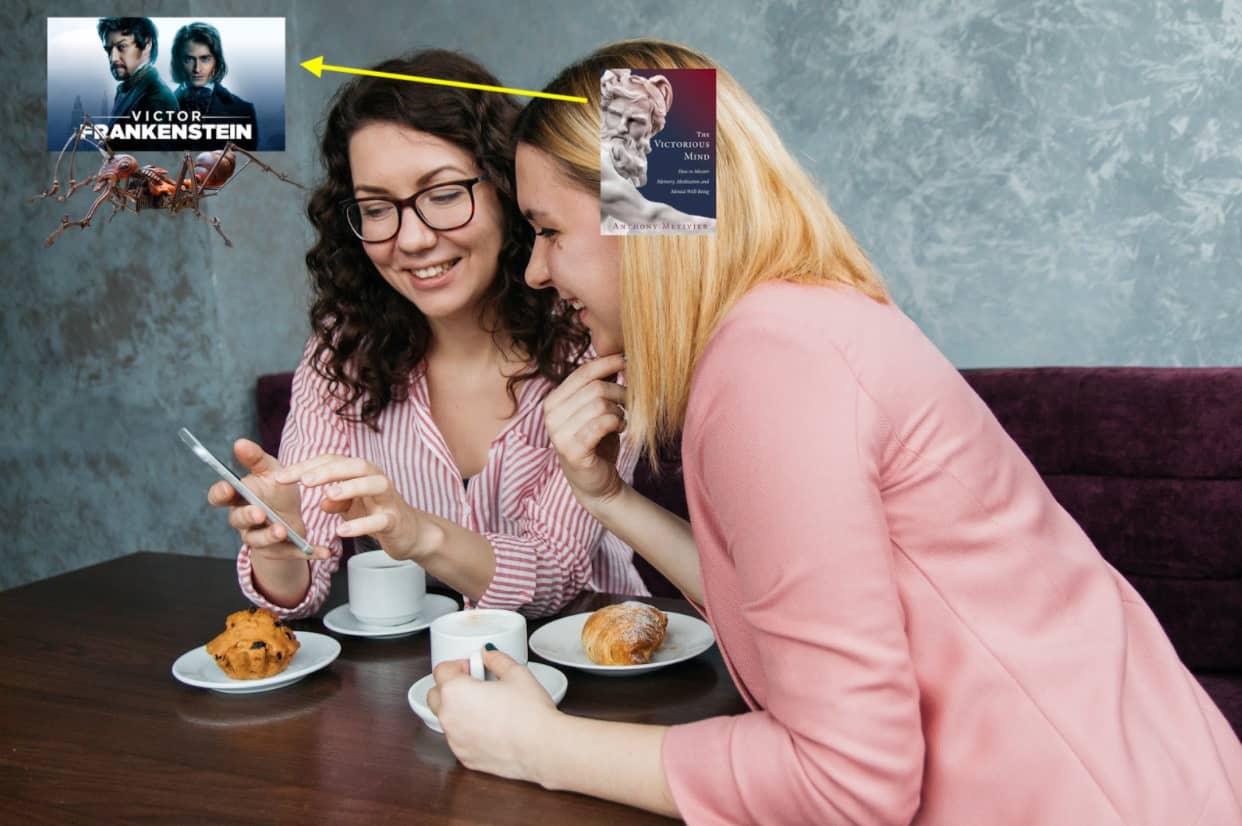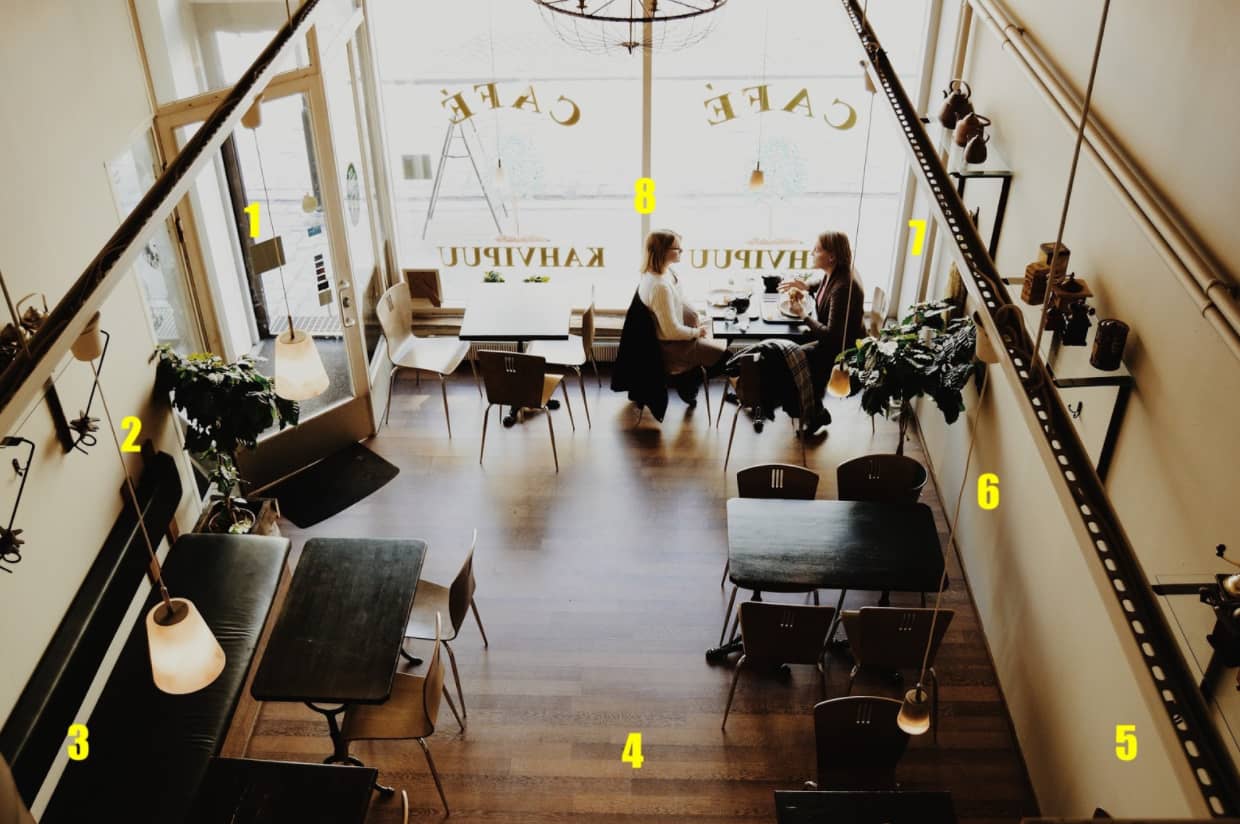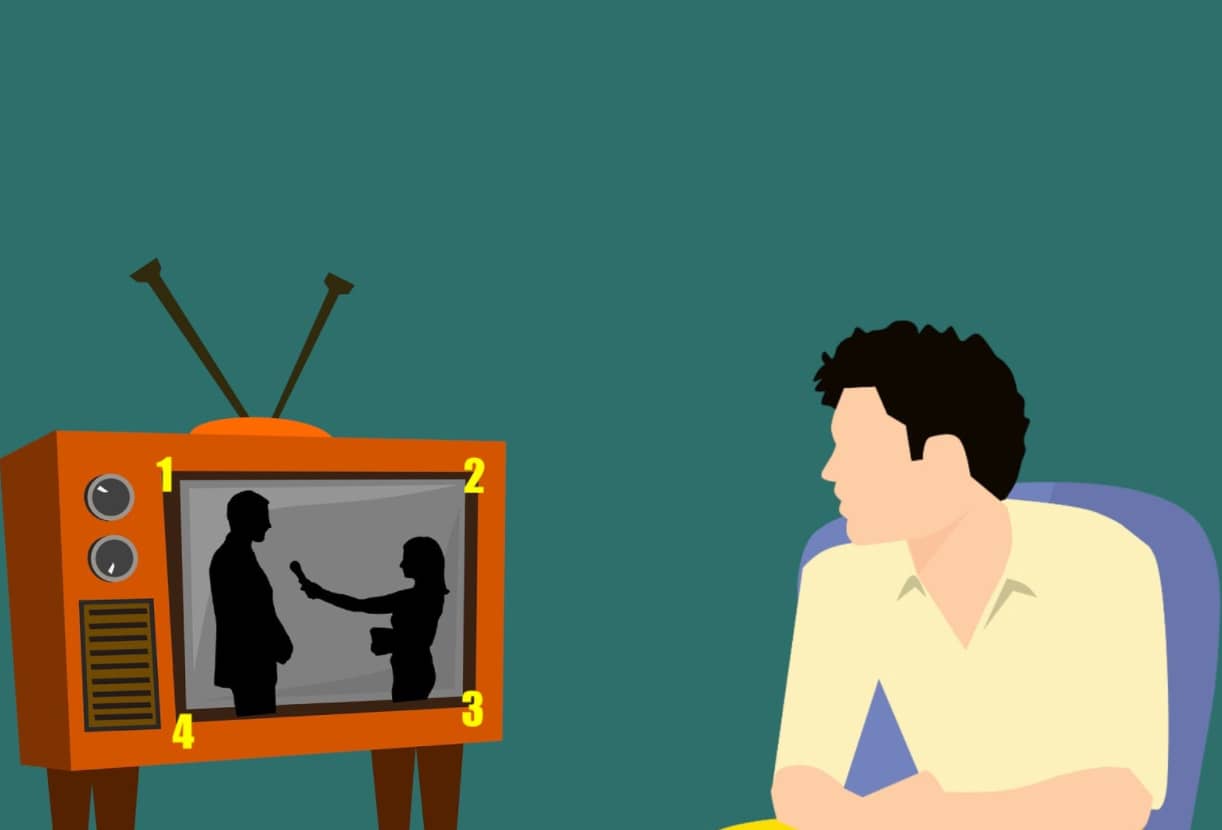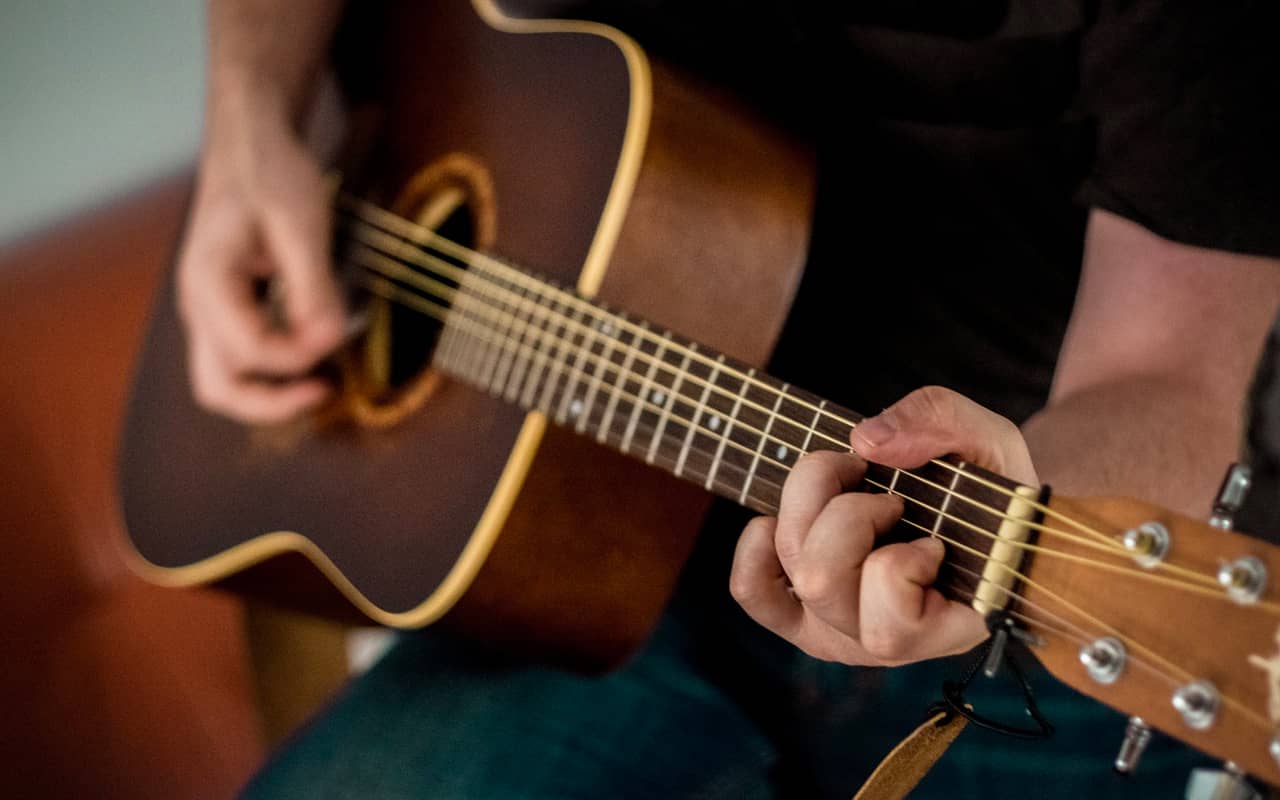Podcast: Download
Subscribe: Apple Podcasts | RSS
 Do you wish you knew how to remember everything you hear?
Do you wish you knew how to remember everything you hear?
If so, you might feel like you’re a poor listener because you forget so many details.
Worse, you wind up losing out on so many opportunities to participate in the present and take action in the future.
For example, let’s say someone mentions a book.
You know you just have to read it because it’s going to help you conquer an important goal.
But after you leave your meeting, you not only forget what the book is called. You even forget that anyone mentioned the perfect path existed for you in the first place.
Good news:
There’s a way to eliminate this problem from your life forever.
On this page, I’ll show you how to remember all the important details in any conversation from now on.
You’re about to become a “Warrior of the Mind” who never forgets important details again.
Let’s get started.
How to Remember Conversations Better In 4 Steps
The steps you’re about to learn begin with a meta-step. You need to do this first in order to see any improvement in your memory for remembering everything you hear.
Commit.
I know, I know.
Some people are already clicking the “back” button because some crazy teacher on the Internet is trying to hold you accountable to your goals.
But we all know it’s true.
Those who succeed at anything are committed to learning skills and practicing.
And that’s all that I ask in the conversation we’re having now:
Remember the need to commit so that you can improve in life.
With that in mind, here’s what I want you to commit to first:
One: The Spatial Memory Hack That Makes Every Bad Listener Good
The first thing you need to do is start becoming more aware of the details as they fly past your ears.Then you need to grab ho
ld of them and pin them into place.
To do this, you’ll want to learn a special technique called the Memory Palace.
There are a few ways to use this technique for conversations and we’ll get into them.
The first thing to understand is that you can use rooms to “place” ideas that you want to memorize.
For example, let’s say the friends Janet and Tina are hanging out in a cafe.
Janet tells Tina about a book that will help her improve her memory. The book is called The Victorious Mind, by Anthony Metivier.
To use a Memory Palace, Tina takes the difficult new title and connects it with information she already knows. She then mentally places this familiar association in the corner of the cafe.

Let’s say Tina’s a fan of the show Victor Frankenstein. The book is by Anthony Metivier, so she imagines Victor handing his mind to an ant after a battle. He’s feeling victorious when he does it.
Now, this association is not a one-to-one correspondence. But later when Tina searches for the book on Google, she’s going to think back to the corner of that cafe and remember the key words: Victorious, mind and Anthony based on the associative-imagery.
These are the basics of the Memory Palace technique.
Two: Elaborate Everything Your Hear
Now that you know about using the space around you, exaggerate and elaborate everything about the association you just made.
Instead of just having Victor Frankenstein hand his mind to an ant, imagine his mind exploding like a bomb.

Hearing the sound of the explosion and feeling its force in your imagination will make the memory much stickier when you think back to that corner in the cafe.
This kind of elaborative encoding can feel difficult when you’re new to using these techniques.
Don’t fret.
These visualization exercises will help you develop the skills in no time at all.
The trick is to have a system for adding the exaggerations. I use the KAVE COGS formula:
- Kinesthetic
- Auditory
- Visual
- Emotional
- Conceptual
- Olfactory
- Gustatory
- Spatial
One way to practice running through each of these is to run through them all while developing your first pegword method.
Three: Practice Scaling
By this point, you’re probably thinking…
“Great.
I know how to memorize just one detail.
What about the thousands of details I encounter in conversations every week?”
Well, we all start somewhere. If you can’t memorize one detail, there’s no point in worrying about how to memorize thousands of them, right?
Scaling up to multiple details is easy, but you need the basics mastered first.
Then, to scale is easy, provided you follow this simple recommendation:
Know how to turn any room into a Memory Palace with at least 8 Magnetic Stations in it.

This is what we call a “Magnetic Square” in the MMM Masterclass. It’s one of several different ways to use the Memory Palace technique.
I like this for cafe meetings because it makes it easy to turn any room into a powerful memory tool.
You can also learn how to expand it into a “Magnetic Cube,” and if you’d like all the details on more variations, this free course should do the trick:
The point is to build your skills gradually. Learn to memorize a few details from conversations first. Then scale.
And remember:
You don’t actually have to be in the room you’re using to remember the details of any given conversation. You can think about any building or location around the world. You just need to prepare the Memory Palaces you want to use first.
Four: Practice With News Videos And Podcasts
Now that you know how to retain information when listening, let’s give you some practice drills.
When listening to remember, using the news and podcasts makes for great practice. One is visual and audio where the other is purely auditory.
When watching news, you can use the screen as a Memory Palace to encode details as they emerge.

This small space might allow you to memorize only four details, but it keeps you focused on the practice. If you get really good, you can also learn ways to reuse Memory Palaces.
You can also use the body of the reporter to capture and pin details:

Then, when you’re used to doing this with people on TV, you can transfer linking details to the bodies of people with whom you hold conversations.
When it comes to podcasts, you can use your smartphone, or even try using objects, like I talk about in this video about my memory practice habits:
How To Retain Information When Listening
So far, you’ve learned how to use rooms, objects like TVs and human bodies to encode information you hear during conversations.
When it comes to retention, you’ll want to do a small amount of repetition that fires off the KAVE COGS we talked about previously.
For example, I recently met with a private coaching client named Michael.
Within the first few minutes of speaking, Michael told me about a friend named Kerry, a math teacher named Igor and talked about Naples, Harvard, studying chemistry for a Regents exam and Upstate New York.
Using the association technique you learned above, I placed all of these details around the screen of my computer as we Skyped. But I also quickly revisited each and went through the KAVE COGS.
To take just one example, when he mentioned he had a friend named Kerry, I used KAVE COGS to associate that name with Kerry King, the guitarist in Slayer.
I felt Kerry’s guitar as if I was holding it myself, heard a Slayer song, felt emotions associated with it, and so on.

You might think it’s a lot of heavy lifting to go through 8 “Magnetic Modes” so quickly, but with a small amount of practice, it’s more than easy. It’s incredibly fun.
Remembering For The Long Term
If you want to hang onto the information from conversations for the long haul, please make sure to use the Recall Rehearsal patterns taught in the MMM Masterclass.
You’ll also do very well to:
- Write down what you heard later
- Speak about the key details to verbalize the info in your own words
- Do any follow up reading
- Listen to any podcasts or videos that will deepen the information
Also, understand that there’s nothing wrong with taking notes during conversations.
Although I can memorize in real time, I still sometimes jot things down. In fact, it’s hard to test if you were correct about certain details if you don’t write the info down.
For example, a friend of mine suggested that I visit Mt. Nebo.
Memorizing the name of this location was easy.
But I wanted to make sure what I memorized was accurate later, and we were in a noisy cafe and I wasn’t sure if I’d heard the correct pronunciation.
That’s why I wrote it down.

Remembering Things You Want Or Need To Do In The Future
Sometimes people tell you things that involve the future, like something you want to look up or visit.
This taps into what scientists call prospective memory.
To remember future things, you have at least two options:
- Mnemonic Calendar
- Spatial labelling
Using a Mnemonic Calendar involves learning the Major System. This lets you create images for every number.
For example, when I wanted to remember that my friend Nick’s birthday is October 25th, I imagined a nail going through a pumpkin. Nail is the image for 25 and pumpkin is the image for October.
When it comes to spatial labelling, I’ll give you an example.
As I discussed in this TEDx Talk, my friend Ben told me the title of a book I absolutely needed to read.
I usually don’t carry the Internet with me (to protect my memory). I remembered to order it when I got back home by placing an associative image of Happiness Beyond Thought at my desk.
Then, when I got home, I literally walked into a Memory Palace and was reminded to look the book up and order it.
You can do this with all kinds of things you need to remember, from groceries for a recipe, making a dentist appointment or memorizing your credit card so you don’t have to pull it out every time you shop online.
Remember Everything You Hear?
Frankly, I’m not sure anyone needs to remember everything.
The trick is being able to remember the information that matters.
Knowing exactly what that information might be is its own skill, and it involves developing pattern recognition and discernment.
Being able to memorize will naturally guide you to developing these meta-skills.
And that means that the best time to get started was yesterday.
The second best time is now.
So what do you say?
Are you ready to remember more from the conversations you hold?
Get some Memory Palaces created, learn to associate and please keep me posted on your progress updates along the way!
Related Posts
- How to Remember Choreography: 7 Tips For Learning Dance Moves Fast
If the standard advice about how to remember choreography isn't helping you memorize dance moves,…
- How To Remember Passwords: 7 POWERFUL Tips
Learning how to remember passwords is fun and easy. Learn the most powerful memory tricks…
- How to Remember Where You Put Something (Once and For all)
If you want to know how to remember where you put something, you need expert…






